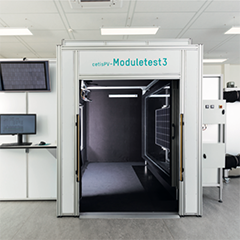Standardization efforts by the International Electrotechnical Commission (IEC) for measuring PV devices have played a key role in the widespread application of this technology. With the maturing and diversification of the PV industry new standards, which define power measurements beyond standard test conditions (STC) are becoming more relevant.
Such measurements, which are used for yield simulations of PV systems, require the highest accuracy, as their results directly impact on LCOE calculations and thus financing possibilities of PV projects. We analyze requirements for such accurate measurements and present equipment capable of delivering the highest precision to meet these demands.
One number to explain it all
Standardization in form of standard test conditions, for power measurements has been a key component to enable the large-scale adaptation of photovoltaic technology. It ensures comparability between different technologies, laboratories and manufacturers worldwide.
The IEC has established a framework of standards dealing with many aspects of quality control and reliability of PV devices. It is this framework of mutually agreed common standards that allows informed and reasonable decisions about investments and technology focus.
The basis for power measurements, as one aspect, is given in the different chapters of IEC 60904, which define requirements for the test specimen, reference devices and measurement systems, as well as correction procedures. Currently the power generation of a PV device is stated on its label as measured under standard test conditions. This corresponds to the maximum power output at 25°C, when illuminated with an AM1.5G spectrum of an intensity of 1000W/m².



























